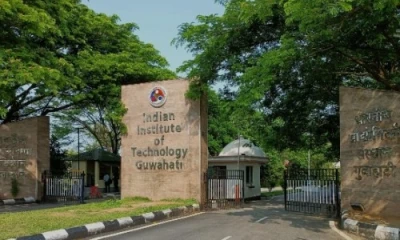In a landmark achievement, researchers at the Indian Institute of Technology Guwahati have unveiled a revolutionary algorithm named Unique Brain Network Identification Number or UBNIN, designed to decode intricate brain networks observed in both healthy individuals and those afflicted with Parkinson’s disease or PD.
This pioneering study, conducted in collaboration with the National Institute of Mental Health and Neurosciences-NIMHANS India, delved into the structural brain MRI scans of 180 PD patients and 70 healthy subjects. By adopting a network-centric approach, the researchers represented distinct brain regions as nodes and assigned connection values based on regional grey matter volume.
Through a series of algorithmic iterations, these connection values were weighted to reflect the significance of each link, resulting in the generation of UBNIN for individual brain networks. Remarkably, this encoding method proved to be distinctive for each participant’s brain network and transferrable across various neuro imaging modalities.
The implications of this groundbreaking research are great, offering insights into brain mapping and presenting a promising biomarker with a numerical value for monitoring the progression of neurological disorders over time.
Parkinson’s disease, a debilitating neurodegenerative ailment characterized by symptoms such as tremors, stiffness, and slowed movements, progressively worsens with age. However, the process of neuro degeneration initiates long before the onset of visible symptoms, emphasizing the critical need for early detection to facilitate effective PD management.
Addressing this pressing need, researchers at IIT Guwahati and NIMHANS embarked on an innovative study utilising non-invasive structural MRI scans during rest. By categorising PD patients into different age groups, the study explored the impact of age on brain connectivity across varying sparsity levels. The findings revealed a declining trend in the clustering coefficient with increasing sparsity for each age cohort.
IIT Guwahati’s Biosciences and Bioengineering Department Assistant Professor Dr Cota Navin Gupta elucidated, “UBNIN serves as a unique numerical representation capturing the distinct characteristics of each human brain from a network perspective. Significantly, we can reverse-engineer an individual’s UBNIN value to reconstruct their original brain network, facilitating efficient identification and characterisation of brain networks.”
PhD Scholar Tanmayee Samantaray further elaborated, “The application of the UBNIN algorithm to longitudinal neuro imaging data holds promise for unravelling the dynamics of brain plasticity, pivotal in understanding brain degeneration and adaptation mechanisms in neurological diseases.”
The versatility of the UBNIN algorithm extends to other neuro imaging modalities such as electroencephalogram (EEG) and functional MRI, rendering it a versatile tool applicable to diverse neurological conditions including Schizophrenia, Alzheimer’s, and Depression. Furthermore, it can be applied across diverse datasets, from protein networks to social and traffic networks, enabling a deeper comprehension of complex system dynamics.
Dr Gupta asserted, “We are exploring the potential of UBNIN as a biomarker for distinguishing healthy individuals from those with Parkinson’s disease at the group level.”
The groundbreaking findings of this research have been published in the esteemed journal Brain Sciences, co-authored by Tanmayee Samantaray, Utsav Gupta, Dr Jitender Saini, and Dr Cota Navin Gupta. Generously funded by the Central Education Ministry doctoral scholarship and supported by the Scheme for Promotion of Academic and Research Collaboration (SPARC Grant), this research marks a significant milestone in the field of neurological sciences.

















